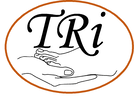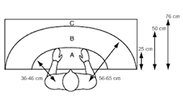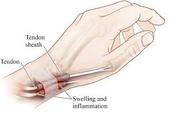Welcome to Reflexology Ergonomics Online Study Series
The Ergonomics online study series is made up of 3 presentations of an hour each.
Exploring how we approach Ergonomic challenges is beneficial for our well-being within our practice as Reflexologists.
Read Reviews from past attendees.
Register below to access the home study.
Please contact me if you have any questions.
What to expect.
Exploring how we approach Ergonomic challenges is beneficial for our well-being within our practice as Reflexologists.
Read Reviews from past attendees.
Register below to access the home study.
Please contact me if you have any questions.
What to expect.
- The home study includes powerpoint presentations, narrated by Lesley Baartman.
- You will enjoy 30 days online access to each presentation
- A comments section for you to ask questions.
- Prompt reply and support to your comments or questions
- A handout accompanying each program
- A Certificate of Completion.
What is Reflexology Ergonomics?
Working with your hands a good part of the day puts strain on muscles and joints, good ergonomics is vital to minimize repetitive stress injuries. Some posture habits and therapy techniques may be contributing to neck strain, shoulder and arm pain, backache, sore wrists and hands. There are ways to practice Reflexology to minimize repetitive stress injuries without compromising on the effectiveness of your therapy.
The study looks at the most effective seated position to maintain neutral posture for Reflexology; then focuses on Reflexology techniques and recommendations to support good posture and minimize repetitive stress.
Working with your hands a good part of the day puts strain on muscles and joints, good ergonomics is vital to minimize repetitive stress injuries. Some posture habits and therapy techniques may be contributing to neck strain, shoulder and arm pain, backache, sore wrists and hands. There are ways to practice Reflexology to minimize repetitive stress injuries without compromising on the effectiveness of your therapy.
The study looks at the most effective seated position to maintain neutral posture for Reflexology; then focuses on Reflexology techniques and recommendations to support good posture and minimize repetitive stress.
|
Ergonomics 1: Introduction to Reflexology Ergonomics
We discuss Ergonomic principles & objectives to minimize or prevent work-related stresses. This includes causes of work-related musculoskeletal disorders (WMSD) and work-related emotional & mental stress (WEMS). This first study in the Reflexology Ergonomics Webinar series focuses on Reflexology techniques and recommendations to support good posture while practicing Reflexology therapy. |
|
Ergonomics 2: Repetitive Motion and Force
The study focuses on therapy techniques to minimize repetitive stress injuries and rehabilitation ideas. Aspects of Repetitive motion and Force during Reflexology practice is explored and the resultant WMSD due to undue stress on joints. The study also highlights some common disorders such as Thoracic Outlet Syndrome, Trigger finger, Carpal Tunnel Syndrome and DeQuervain's tenosynovitis. |
Thank you so much Lesley! You're very knowledgeable about the impact of these Reflexologist "bad habits", what their impact is, and how to prevent and treat them. I really appreciate this.



